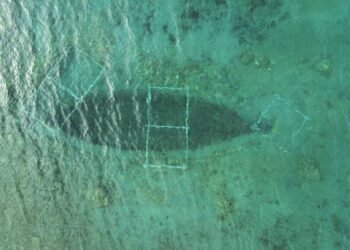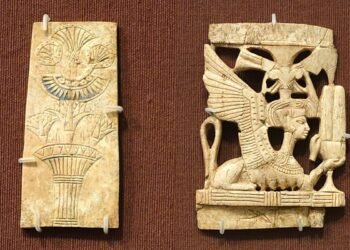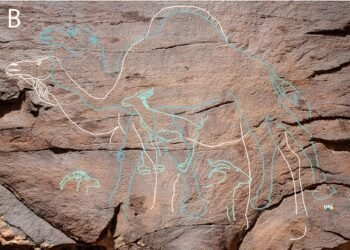Researchers have just uncovered ancient finger marks — traces of sacred gestures from millennia past — deep within a limestone cave called New Guinea II (also known as Waribruk to the GunaiKurnai people) in GunaiKurnai Country in southeastern Australia. Such “finger flutings,” preserved in soft, glittering walls beyond natural light, are an unusual and powerful link to the past.
The site’s walls are coated with soft limestone and tiny calcite crystals that glimmer under artificial light. Over 950 finger grooves were found by archaeologists on the glittering surfaces—some horizontal, others diagonal or vertical—indicating intentional movement, not random scratching.
Researchers said that through these finger trails, we see not only a physical act, but a cultural practice grounded in knowledge, memory, and spirituality.

Charcoal and ash remains found below the decorated sections date the grooves to between 8,400 and 1,800 years ago. There are no signs of domestic occupation, such as food remains or hearths, nearby. This supports GunaiKurnai oral traditions that caves like Waribruk were visited only by mulla-mullung—medicine people who were believed to possess spiritual powers.
These spiritual leaders utilized glittering stones and powders in rituals. In the 19th century, ethnographer Alfred Howitt documented stories from Elders about the use of crystals, passed down from parent to child. One such account, from a man named Tankli, claimed he had been taken into a glowing cave by his father and taught how to use the power of the crystal.
Many grooves were discovered at heights suggesting the presence of both children and adults, some likely lifted by others to reach the ceiling. This suggests that the role of mulla-mullung was hereditary.
The finger grooves were situated only where there was the glittering crystal layer, with even newer markings either aligned with or overlapping older ones, suggesting a reverent continuation of ancestral gestures.
Photogrammetry helped researchers record the delicate impressions accurately. The findings indicate that the grooves were more than art for display—they were spiritual touches intended to connect with the power of the ancestors.
These finger flutings, in the silent darkness of Waribruk, remain as quiet, enduring records of ritual acts, connecting modern communities to the sacred rituals of their ancestors.
























Comments 0